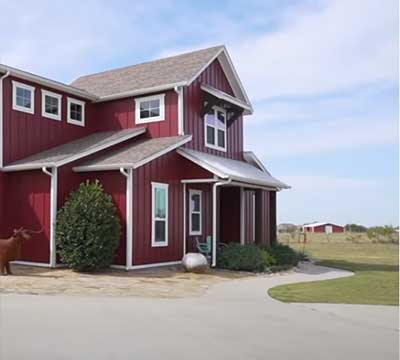In recent years, there has been a growing trend of people seeking a more sustainable and self-reliant lifestyle by embracing off-grid living. One innovative and captivating option gaining popularity is the barndominium, a unique blend of a rustic barn and a comfortable condominium. This concept merges the charm of rural living with modern amenities, making it an ideal choice for those looking to escape the urban sprawl while still enjoying contemporary comforts.
In this blog post, we will explore the essentials of designing a barndominium for off-grid living, highlighting the integration of renewable energy, sustainable materials, efficient systems, and the harmony of nature and modern comfort.
Site Selection
Choosing the right location for your barndominium is crucial for a successful off-grid living experience. Look for a site with ample sunlight exposure for solar panels and natural heating, as well as access to water sources, like wells or rainwater collection systems. Proximity to forests or wind corridors may also enable wind energy harvesting through turbines, further reducing your reliance on conventional energy sources.
Design and Layout
When designing a barndominium, blend aesthetics with functionality and prioritize passive design techniques. Opt for an open layout that maximizes natural light and airflow, reducing the need for artificial lighting and cooling. Large windows and strategically placed skylights can transform your living space, creating a connection with the surrounding nature and promoting a sense of well-being.
Consider incorporating an attached greenhouse or conservatory, providing year-round food production and enhancing the beauty of your living space. This addition can serve as an indoor garden, extending your growing season and providing fresh produce during winter months.
Sustainable Materials
Utilizing eco-friendly and sustainable building materials is paramount in off-grid living. Opt for reclaimed or recycled materials like reclaimed wood, repurposed metal, and salvaged bricks, reducing your environmental impact while adding unique character to your barndominium. Building with materials sourced locally also minimizes transportation emissions and supports local businesses.
For insulation, consider eco-friendly alternatives like sheep’s wool, straw bales, or recycled cellulose, providing excellent thermal performance and reducing your energy consumption.
Energy Independence
Off-grid living relies on renewable energy sources for power generation. Solar panels are the most common choice, efficiently harnessing the sun’s energy. Consider a hybrid solar system with battery storage, enabling you to store excess energy for use during cloudy days or nights. Pairing solar panels with a wind turbine can provide a reliable energy supply, especially in regions with consistent winds.
To further enhance energy efficiency, invest in energy-saving appliances and LED lighting. Implement smart home technologies, allowing you to monitor and control energy consumption remotely.
Water Management
Efficient water management is crucial for off-grid living. Install a rainwater harvesting system to collect and store rainwater for domestic use. Implement water-saving fixtures such as low-flow toilets, faucets, and showerheads to minimize water wastage. Greywater recycling systems can also be integrated to reuse water from sinks and showers for irrigation purposes.
Waste Management
Living off-grid demands a responsible approach to waste management. Implement composting systems for organic waste, reducing the amount of waste sent to landfills while producing nutrient-rich compost for your garden. Practice recycling and upcycling to give new life to materials that would otherwise be discarded.
Heating and Cooling
A well-designed barndominium should prioritize natural heating and cooling methods. Utilize thermal mass, such as stone or concrete floors, to absorb and release heat, stabilizing indoor temperatures. Wood-burning stoves or high-efficiency pellet stoves can provide ample warmth during colder months.
During the summer, shading strategies like awnings, pergolas, and deciduous trees can block direct sunlight while allowing natural light to filter through. Ceiling fans and cross-ventilation also help maintain a comfortable indoor environment without relying solely on air conditioning.
Designing a barndominium for off-grid living is a thrilling journey that harmonizes the simplicity of rural living with the conveniences of modern technology. By carefully selecting sustainable materials, harnessing renewable energy, and efficiently managing resources, your barndominium will become a sanctuary where you can thrive in harmony with nature while enjoying a comfortable and self-reliant lifestyle.
Remember, the key to a successful off-grid living experience lies in thoughtful planning, creativity, and a genuine appreciation for sustainable living. Embrace the journey of designing your own barndominium, and let it be a reflection of your values, a testament to your commitment to a greener, more self-sufficient future.

